Having heard about the desert, most people imagine endless sand dunes, above which there is a haze of hot air. A real wasteland, alien to all living things, a merciless abode of deceptive mirages and hot sand... At best, we imagine at this moment rare cacti that can endure this heat and the lack of sufficient water.
Common Misconception
Meanwhile, deserts and semi-deserts actually look completely different. At certain times of the year they become a real world of wonders and discoveries, covered with flowers and amazing plants. Animal and vegetable world These territories are truly amazing in their diversity and uniqueness.
Of course, you won’t find birches or plantains among the sands and dry clay soils, but much more amazing plants can be found in this area if you know when and where to look.
The desert is not always sand
Before we talk about what plants grow in deserts, let us draw attention to the inaccuracy of the stereotype that has developed over centuries regarding these corners of the globe. Contrary to popular belief, quicksand and hot air are not typical of all deserts. Strange, isn't it? And yet, this is the absolute truth.
Thus, in addition to traditional sandy ones (as in Africa), there are clayey, rocky and saline semi-deserts and deserts. Naturally, depending on the type of soil, the fauna and especially the flora will vary significantly.
A world of boulders and cracked earth
Let's start, perhaps, with rocky deserts, which at first glance seem completely unadapted to life and even aggressive. In summer, winter and autumn it is difficult to find even a small patch of greenery here, but real miracles begin with the arrival of spring.
The harsh earth comes to life, filled with colors and life. Desert flowers literally dot every boulder, open up and turn this area into a marvelous garden.
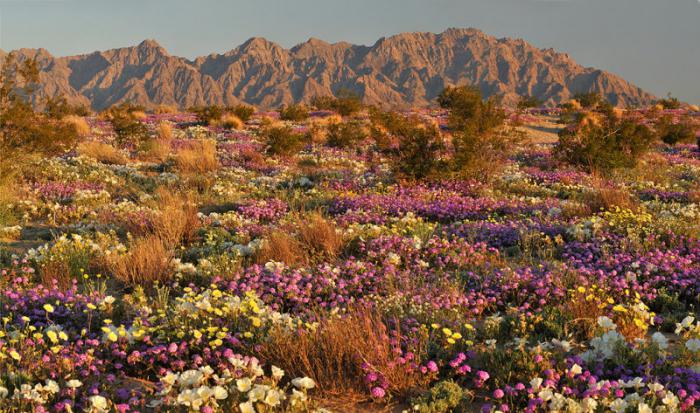
Numerous rocky screes that previously seemed dead are overgrown with capers, the snow-white flowers of which resemble more familiar orchids. In the shade of numerous boulders, wild calendula blooms, filling the wasteland with color and a specific, incomparable aroma. Every crack of the earth's surface is filled with the greenery of juicy lettuce, among which numerous tiny yellow inflorescences open.
Everywhere you look, you can see other desert flowers - astragalus, whose grayish leaves are slightly lowered to the ground to reduce evaporation. These amazing plants bloom only in spring, and their bizarre inflorescences amaze with their variety of shapes.
Numerous tulips bloom in the beds of water streams, drying up as summer approaches, painting the grayish-brown wastelands in lilac, scarlet, yellow and pink tones. They are gradually being replaced by desert flowers such as wild poppies, during the flowering of which the rocky deserts turn into a real scarlet sea.
Above all this variety of colors and shades, pistachio trees rise, gradually filling with life. The buds on them quickly swell in the spring, and in just a few weeks the bare trunks, intertwined with each other, turn into real trees with rich crowns, through which the sky is practically invisible.
Rocky deserts and semi-deserts are a real home for perennial ferules, real giants of this world, whose yellowish and greenish blooms set off the piercing blue of the sky and the variety of shades of the soil.
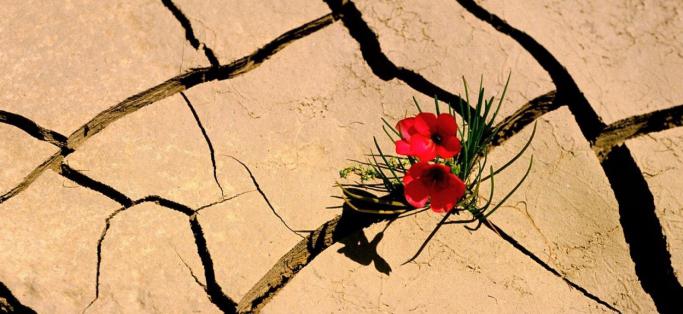
You can also find entire groves of wild pomegranates and twig-shaped almonds, the flowering of which resembles clouds of soft pink color. All this riot of colors develops rapidly and inexorably, only to disappear again in two or three weeks until next spring. By mid-April, the desert flowers are fading, and the rocky soils give life only to blackberries, blackberries and pomegranates.
Sand Dune World
A riot of colors and amazing flora can be seen in spring not only on rocky soils, but also among the endless expanses of sand. You will be surprised to know what plants grow in this type of desert. The whimsicality of shapes and colors here is truly amazing.
The Karakum, considered one of the largest Eurasian deserts, is often called “black sand” precisely because of its flora. This is the color of the camel thorn fields that grow in this area. These thickets are interspersed with bushes of wild wormwood, the leaves of which seem to be crushed by grayish ash.
Miniature sedge ilac is a typical plant of the desert zone. It is this that gives these cruel and unfavorable territories a green, lush cover in the spring. For many years, saxaul can withstand such conditions, its height can reach 6-7 meters.
Wild acacias, which have special silvery foliage and inflorescences of a rich purple hue, especially stand out against the backdrop of sand dunes.
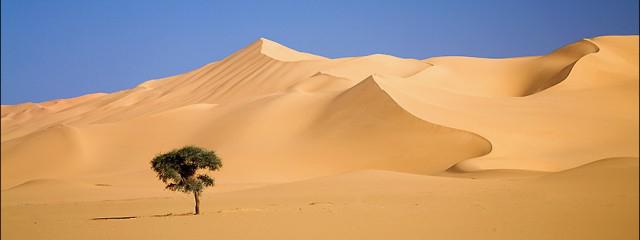
On such lands, conditions are considered the most severe and unsuitable for vegetation. All deserts of Africa and even the Sahara are recognized as more suitable for life. The thing is that the soil here is oversaturated with salt, which makes the life of most plants impossible. Only halophytes were able to adapt to this aggressive environment.
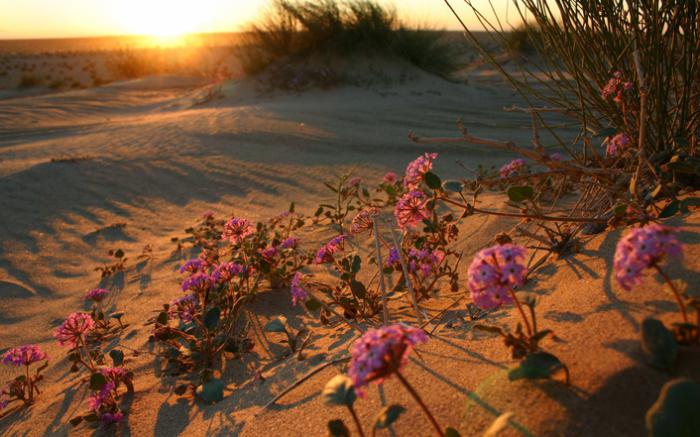
On such soils grow special types of wormwood, saltmarsh asters, saltgrass, saussurea and many other types of plants.
Clay deserts
This type is more typical of Asian spaces. Vegetable and animal world Such deserts are also quite scarce due to the specific nature of the soil.
Takyrs - as this area is called - in the dry season is a cracked wasteland, where it is almost impossible to find at least one green patch of land. Plants that take root in such areas have a very developed root system, thanks to which they are able to extract moisture from the depths. A typical example Solyanka is considered to have such desert endurance.
The period in which clay deserts come to life also occurs in spring, when the soil is saturated with moisture, eroded and becomes more pliable. Basically, ephemerals and ephemeroids take root in such areas. The former live only one year and bloom for only a few weeks while conditions permit. Ephemeroids, on the other hand, are perennial plants; their seeds and bulbs are more adapted to the specific soil and climate.
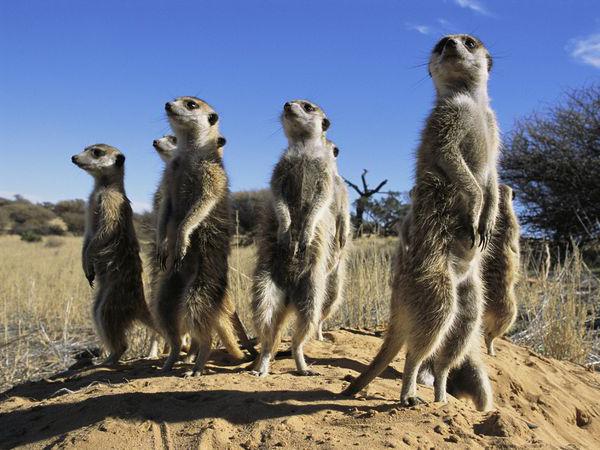
And in Russia there are deserts
As a rule, when deserts are mentioned, the Sahara, Kalahari and Gobi come to mind, and not everyone thinks about Russia at such moments. Basically, the native land is associated with taiga and endless snowy expanses.
Nevertheless, this phenomenon is not at all alien to our country. The desert in Russia is much richer in flora than one might imagine. Don't believe me? Read on!
Oddly enough, one of the Russian deserts is located just 800 km from the capital. Archedinsky-Don sands - this is the name of the local wasteland. Most of this territory is covered with sandy massifs left by the Don since the Ice Age.
The plants of the Russian deserts make this territory truly unique in its kind - birch bushes stretch among the sandy hillocks, black alder and aspens grow. Juniper, a special type of cinquefoil and buckthorn are found here. There are also saxauls, common in desert areas around the world.
In spring, numerous tulips bloom in particularly humid desert areas, turning the harsh nature into a veritable parade of colors and shades. They can be called the brightest accent among the desert spring.
There are practically no dangerous animals here. The most common representatives of Russian desert fauna are ground squirrels and jerboas. Of the larger animals, saigas are common in this area, and the number of bird species here is truly enormous.
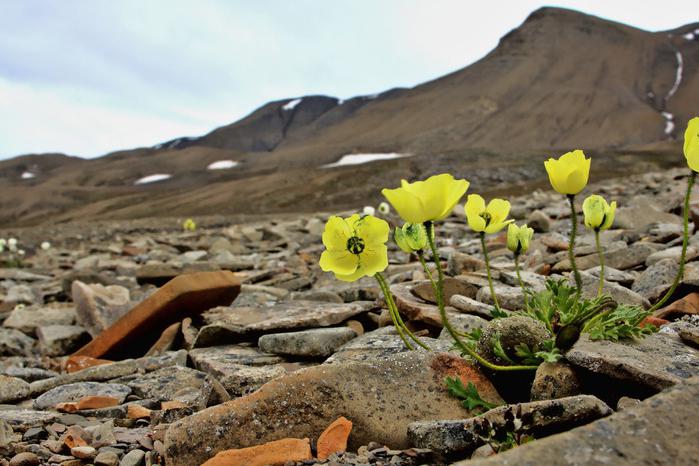
Where sand gives way to ice
Let us note that the desert in Russia is not only the Tsimlyansk and Archedinsky-Don sands. These areas also include the Arctic wastelands, where heat gives way to frost. Most Every year these expanses are covered with a thick layer of ice, and here you can only find moss that is very resistant to low temperatures. Only at the height of summer do the white wastelands transform beyond recognition - mosses and lichens acquire new colors, forming green-red carpets. Thistle and some types of cereals emerge from the frozen soil.
Flowering plants of the Russian deserts are also found here - foxtail, buttercup, arctic pike, snow saxifrage and even polar poppy. Here and there you can see sky-blue forget-me-nots and fluffy white moss. During this period, the icy, harsh desert turns into a real wonderful world, where the beauty and riot of life compete with low temperatures and strong winds.
Much more striking is the diversity of the fauna of the Arctic wastelands - walruses, seals and polar bears coexist here with a huge number of bird species, deer, narwhals and beluga whales.
Distant tropics
It is with this territory that deserts as such are associated. The oldest sandy wasteland, the Namib, is also located here. This tropical desert is not at all rich in flora, but the small local flora is simply amazing in its endurance and ability to adapt to such unfavorable conditions. Velvichia, whose lifespan reaches 1000 years, during its entire existence is capable of growing only two leaves, the dimensions of which, however, are by no means small: length 2-4 m (sometimes up to 8 m) with a width of about a meter. The quiver tree reaches a height of 7 meters, and the bunk provides life to all representatives of the fauna in this area with its reserves of moisture and nutrients.
The same Sahara
Another tropical desert is the Sahara, where vegetation is more common than in the Namib. In addition to the already mentioned representatives of the flora, you can find wormwood and other types of unpretentious plants here. Oleanders and tamarisk grow on the territory of the oases. Date palms and acacia trees are common in some areas.
In relatively moisture-rich areas you can find entire fields of Anabasia, which looks like countless green tiny stars.

As for the fauna of the African desert, you can find the most amazing creatures here. Common in the Sahara, for example, are horned vipers and scarabs, which are considered sacred by some peoples. Long-eared fennec cats, addax antelopes, camels and yellow scorpions are just a small part of the desert fauna.
Owners of sands and dunes
Since we are talking about such a phenomenon as the desert, we cannot help but talk about its real owners - the hardiest plants in the world. Of course, we will talk about cacti. Their specific shape and root system allow you to retain moisture for as long as possible, which makes it possible to live normally in conditions of rare rains.
We are accustomed to thinking that the only property and feature of cacti are their spines, but in fact it is difficult to find a more amazing sight than the flowering of these plants. This happens in the spring, when rain falls on the hot sand and the soil becomes saturated with moisture.
During this period, low-growing prickly pears light up with crimson lights and green-yellow agave tassels bloom. Yellow, green, pink and white flowers adorn these prickly representatives of the desert flora everywhere.
Driest desert
Atacama is currently considered the driest region in the world. For several years there is no precipitation here, and therefore the flowering periods are especially unique. Usually grey-reddish soils are instantly transformed, only to return to their previous state within a week.
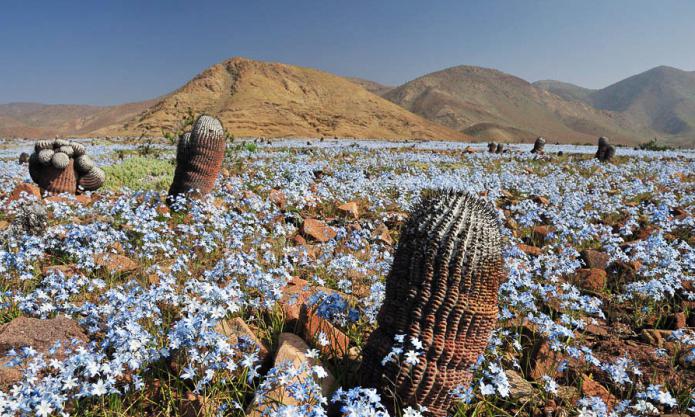
During periods of rainfall, entire fields are dotted with the bright purple flowers of desert verbena. Low-growing vernerias, Ramera's groundsel and bright yellow loma add color to this range.
More than 200 species of animals, birds and reptiles live here, despite the harsh environmental conditions. For example, vicunas (a special subspecies of llamas) and viscachas (small chinchillas with long tails) are common in the Atacama area.
California Death Valley
The Mojave is a desert whose plants and animals are quite diverse. Despite the intimidating name, this part of California is not so lifeless. For example, tree-like yucca and creosote bushes are quite common here, the flowers of which vary in color from white to bright yellow, depending on the species.
In some areas, Coleogyne is common, the flowering of which is very diverse in both tone and shape. Teresken, which is also called desert buckwheat, is also found quite often in more or less humid parts of the desert.
Ocotiyo lights up with bright red, almost orange candles in the spring, its inflorescences rising high above the surface of the Mojave shrubs. At the same time, numerous burro bushes bloom. Individually, the flowers of this plant are somewhat similar to mustard flowers, however, hundreds of such light yellow buds bloom on each branch, which makes the bush a little fluffy visually.
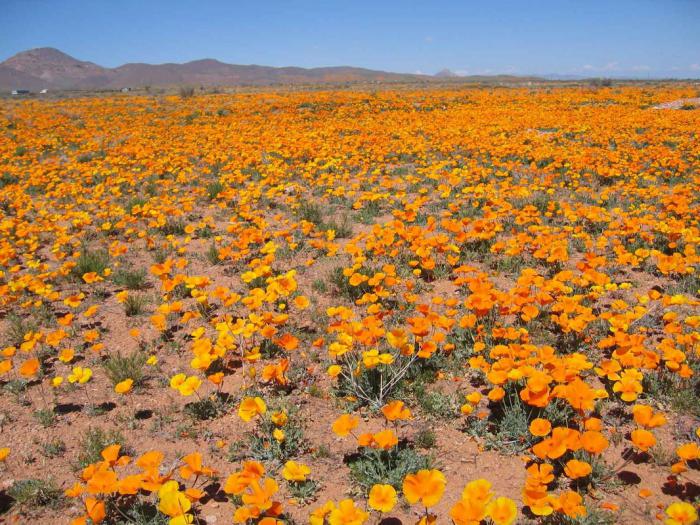
An amazing land - the desert. The plants and animals here are truly unique. It’s hard to even imagine how rich and diverse this paradise is, existing for a short moment.
Purple, red, orange, yellow, white and pistachio are all the colors that the Mojave turns into in the spring, only to return to arid and grayish-red within a few days until the next rainstorms.
A significant area of our planet is covered with flat surfaces. And some of these places are characterized by particularly aridity, and a minimum of animals live there. The flora of such territories has its own characteristics. Experts call these places deserts and semi-deserts; they can be sandy, rocky, clayey and saline. Let's talk about what plants are known that grow in deserts and semi-deserts.
In fact, quite a wide variety of plants can be found in deserts and semi-deserts. However, they all have quite a lot common features, which are caused by growing in similar habitat conditions. Desert vegetation is characterized by strong sparseness and poor species composition, which can be traced over a large area.
What plants grow in desert and semi-desert?
Inland deserts and semi-deserts located in temperate zones are covered with sclerophyllous plants, including leafless shrubs or subshrubs, represented by saxaul, juzgun, ephedra, solyanka, wormwood, etc.
An important component of many deserts and semi-deserts are herbaceous plants, which are classified by botanists as ephemerals and ephemeroids. Thus, ephemerals are annual crops that have a particularly short growing season. They germinate during the rainy season, when the humidity of deserts and semi-deserts increases slightly. And their entire lifespan usually does not exceed several weeks; before drying begins, they have time to grow, bear fruit, and then die off completely. Quite a few varieties of ephemerals are found on the territory of Russia, they are represented by spring stonefly, oak grass, sickle-shaped horncap, northern breaker, African malcolmia, desert alyssum, etc.
As for ephemeroids, they are perennial crops. Such plants live according to the principle of ephemerals, but with one difference - the crop does not die after the end of a short growing season; its underground organs, which have accumulated nutrients, are preserved underground. After the onset of the next favorable period, the life activity of ephemeroids resumes. Classic examples of such crops are yellow goose onion, Siberian kandyk, bulbous bluegrass and spring adonis, etc.
Subtropical and tropical inland deserts located in Africa and Arabia are also covered with xerophilous shrubs and ephemeroids. In addition, succulents also grow in them. These are special plants that consist of tissues that can contain a supply of water. Their leaves are pubescent or covered with a special waxy layer, which reduces evaporation, and the leaves or stems themselves are filled with moisture.
Succulents often have long roots that can reach underground aquifers, and they can also have surface roots that collect moisture from precipitation. The most famous succulents include cacti, aloe, sedum, etc.
Deserts covered with sand dunes or a salt crust are completely devoid of vegetation.
Those subtropical deserts and semi-deserts located in North America or Australia are characterized by fairly rich vegetation cover. There are practically no areas free of vegetation. Such deserts and semi-deserts are covered with low-growing acacia and eucalyptus trees; as for pebble-crushed stone deserts, semi-shrub saltworts, represented by quinoa, twig, etc., usually grow on them.
If we talk about subtropical deserts or tropical oceanic areas of this type, then in such areas especially many succulent-type plants grow.
Salt marshes of deserts and semi-deserts located in the temperate, subtropical and tropical zones have many similar features, including plant species diversity. On their territory there are halophilic plants, also called halophytes. These crops easily tolerate high soil salinity. Halophytes are often similar to succulents - they have thick and somewhat swollen leaves, which is explained by attempts to retain hard-to-reach moisture. Classic examples of such plants are saltwort, comb grass, anabasis, varieties of wormwood, immortelle, etc.
Some semi-shrubs or shrubs can also grow on desert salt marshes, for example, tamarix or saltpeter, etc.
The flora of oases, large river valleys and other wet areas differs significantly from the main vegetation of deserts and semi-deserts. Thus, in the valleys located in the desert-temperate zone of Asia, there are thickets of some deciduous trees, for example, turgan poplar, willow, and elm. And in the valleys of rivers flowing in the subtropical and tropical zones, evergreen crops grow, represented by palm trees and oleander.
Basically, all plants growing in semi-deserts and deserts are adapted to exist in harsh conditions - with a minimum of moisture, dry air, severe insolation or winter frosts.
Located in three climatic zones: temperate, subtropical and tropical, the flora and fauna of these zones have differences due to climatic features.
In the semi-deserts of the temperate climatic zone, plants of the grass family, wormwood, chestnut, cinquefoil, fescue, prutnyak, as well as bulbous plants - ephemeroids, predominate, which transform its appearance. a short time in the spring, as a result of soil moisture, but under the influence of high daytime temperatures, they quickly fade, and the semi-desert again takes on the appearance of a scorched space with a fragmentary arrangement of specific vegetation. In addition to herbs, shrubs and trees grow in this zone: sand acacia, juzgun, oleaster, white saxaul, etc. Southern Hemisphere Succulent plants are added to these species. In the semi-desert zone there are conditions for cattle breeding.
The fauna is represented by rodents (there are hamsters, jerboas, gophers, mice, a long-eared hedgehog), reptiles, and insects that hide from the heat of the day in burrows. Predators – polecat, fox, gazelle antelope, saiga, birds – larks, bustard, which is an endangered species, eagle, etc.
in South America, in addition to the listed rodents, there are nutria, viscacha, armadillo, deer, Pampas cat, and birds: Nandu ostrich, tinamu, palamedea, and condor.



sand acacia
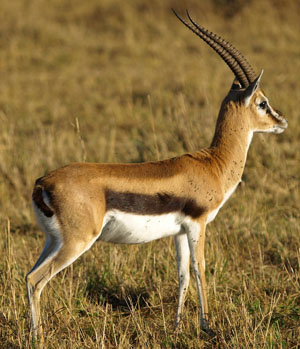
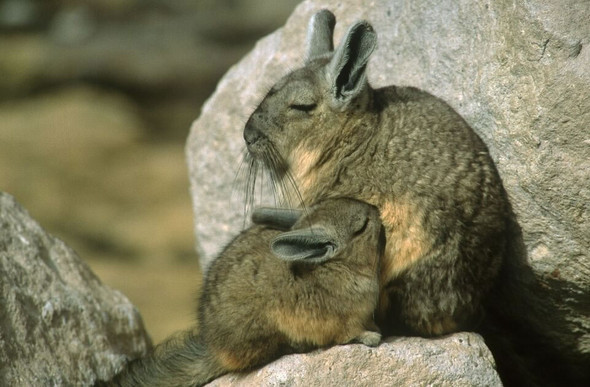
The film below tells about the bustard, which lives in the semi-desert zone of Kazakhstan.
In Russia, semi-deserts are located along the southern border, in the Caspian and Ciscaucasia regions.
A distinctive feature of the semi-deserts of the subtropical climate zone from the temperate one is the absence of negative temperatures in winter. In the semi-deserts of the subtropical climatic zone of North Africa, Central Asia, the Caucasus, Australia, and South America, shrubby vegetation predominates, although turf grass species, wormwood, are also common, prickly pear cactus, Billardier's saltpeter, astragalus, orchard tree, lavender, and wild spurge are common.
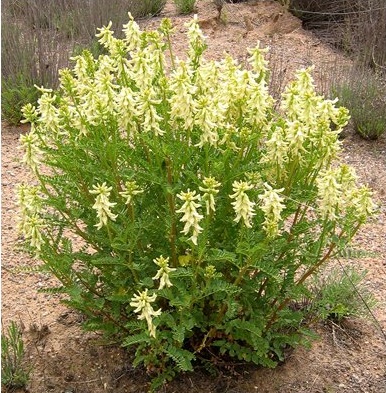
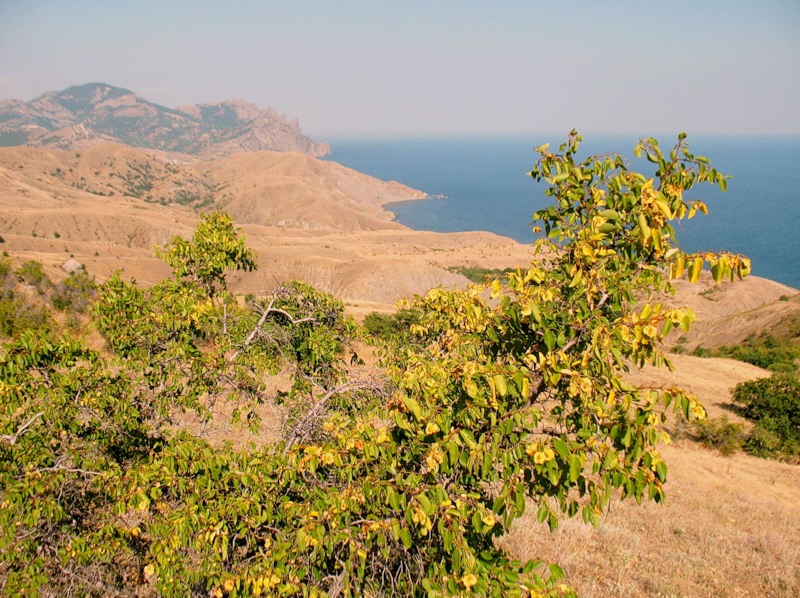


Wild spurge

In semi-deserts North America Typical representatives of vegetation are cacti, creosote bush, agave, dasylyrion, yucca, parfolia, xerophytic bromeliads.
The fauna of the subtropical semi-desert zone, in addition to rodents and reptiles, is supplemented by ungulates (gazelles, donkeys), predators - leopard, cheetah, lions, hyenas, jackals. There are reptiles (turtles, lizards, geckos), birds, among which the black vulture and vultures are notable. Insects are widely represented: many beetles, spiders, termites.

The tropical semi-desert zone is characterized by an arid and hot climate throughout the year. Plants are drought-resistant, with some ephemerals. The sparse vegetation consists of acacia and tamarisk shrubs, a wide range of succulents, irises, amaryllis, and lilies that bloom during the rainy season. Among the herbs, saltworts, cereals, and succulents predominate. In Australia, a small number of eucalyptus trees are found in areas close to groundwater. In the Kalahari semi-desert area, acacia is also the most common, among the grasses are aristida, aloe, and cereal plants. The semi-deserts of America are characterized by cacti, presented in a huge variety of species, and thorny acacia thickets.
See the video about how aristida grows in semi-desert conditions.
The fauna of the tropical semi-desert of America is inhabited by antelope ground squirrels, hamsters, guinea pigs, kangaroo mice, and predators: coyote, puma, skunk, fox, and wolf live here.
In Africa, in addition to rodents, snakes, reptiles, there are jackals, hyenas, leopards, cheetahs, ostriches, ibises, camels, and in Australia - kangaroos, Dingo dogs, and dromedary camels.
The film tells about the plants and animals of the African semi-desert and desert:
.The driest areas of our planet are semi-deserts and deserts. Temperature fluctuations in deserts during the day can reach 30 degrees or more. Rains are very rare here, and the sun is incredibly hot.
Daytime temperatures in summer period There are more than 50 degrees, and sometimes even frosts are possible at night. It would seem that there is no place for plants here, but this is not so - in all deserts there are special forms of vegetation unique to it.
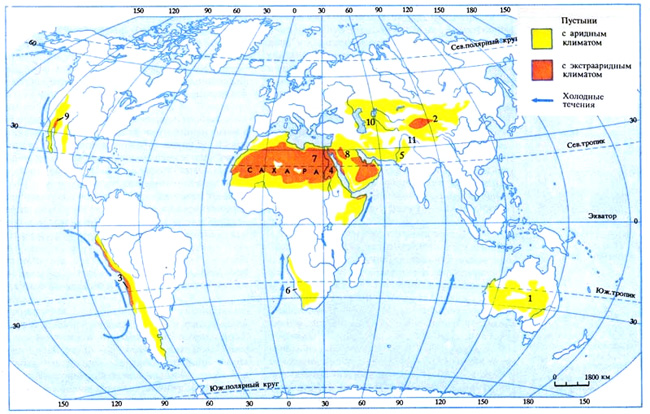
Deserts with extreme indicators:
The lowest is Simpson (hereinafter on the map - 1), Australia, - 12 m from sea level.
The highest is Tsaidam (2), Central Asia, from 2600 to 3100 m above sea level.
The driest are Atacama (3), South America, from 10 to 50 mm/year; Nubian (4), North Africa, 25 mm/year.
The wettest are Thar (5), India, from 150 to 500 mm/year; Namib (6), South Africa, 100 to 500 mm/year
Highest absolute temperatures in deserts:
In tropical deserts: North Africa - Sahara, +56°C; Libyan desert, (7), +58°С; Nubian Desert (4), +53°С; Arabian Peninsula - Big Nefud (8), +54°С.
In subtropical and inland deserts: North America - Mojave (9), +57°С, middle Asia- Karakum (10), +50°С, Hindustan Peninsula - Thal (11), +49°С.
The climatic conditions of the deserts have formed vegetation that blooms luxuriantly in the spring, when, after rains, sandy or clay soils are covered for a short time with a bright carpet of flowering plants. But as soon as the long, hot and dry summer sets in, all desert vegetation freezes, annual plants dry out, and perennial grasses continue their life underground. Shrubs and subshrubs also shed their leaves at this time.
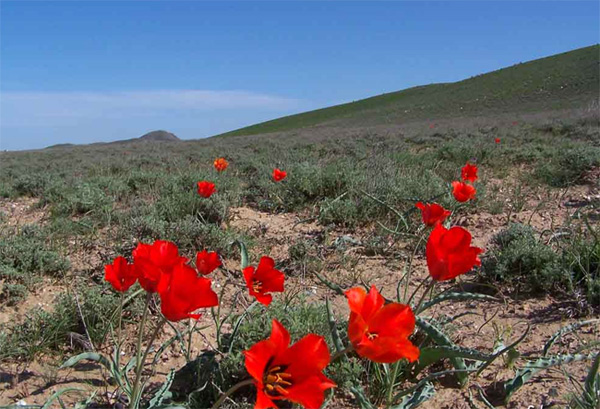

Where do plants get water from during hot, dry periods? Indeed, in the desert the amount of moisture evaporated is many times greater than the amount received. It turns out that sands are capable of condensing atmospheric moisture at night, turning it into water and accumulating it in the surface layer. Due to it, desert plants that have surface roots exist. Another source of water is deep groundwater, which is reached by plants with long roots. But there is still little moisture, and desert plants over the many millennia of their existence have developed special adaptations for minimal water consumption. Their leaves have a very small evaporating surface and often disappear completely or turn into spines.

For example, acacia. Translated from Greek, “acacia” means thorn.
Acacia spines come in a wide variety of varieties: large and small, thick and thin, long and sharp, like needles, or branched into several spines that point in different directions. But there are acacias without thorns. In sandy spring, acacia produces fluffy silver leaves that soon fall off, and the short leaf petioles-spines remain the only decoration of the plant for the entire period of the summer heat.
In the deserts of the temperate zone - the Karakum, Kyzylkum, Gobi and some others - small trees of white and black saxaul are found. They often form vast thickets - a kind of desert forests.
Saxaul- This is an amazing shrub tree. It occupies vast, almost waterless spaces in deserts. Black saxaul grows on highly saline soils, while white saxaul, with a more powerful root system, prefers sand. Saxaul is a tree without leaves. In black saxaul they are replaced by diverging and hanging branches with brittle greenish twigs at the ends, and in white saxaul they are replaced by scales with a filmy edge.
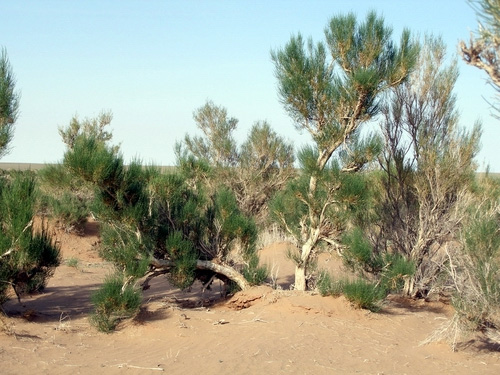
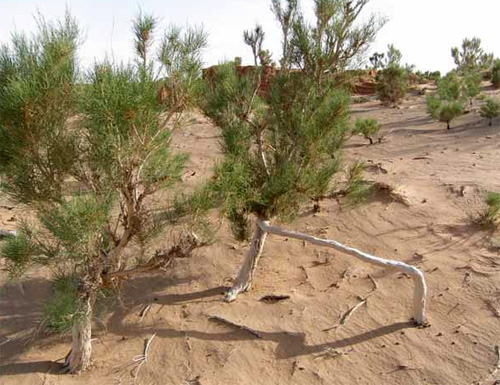
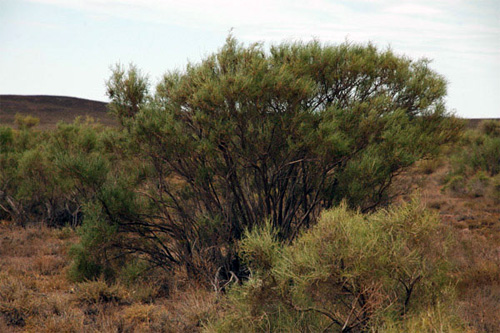
In the deserts of the Northern and South America found in abundance different kinds cacti, and in South Africa - milkweed, extremely similar to them. These plants store water in their fleshy stems, protected by sharp needles and thorns.
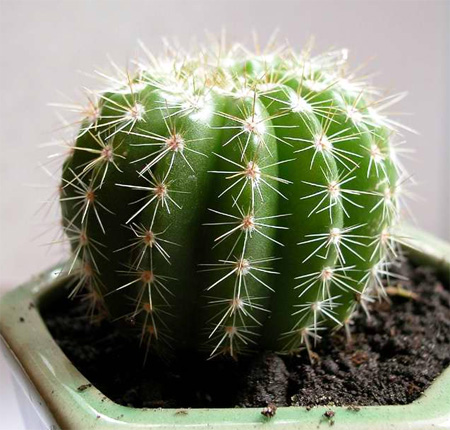
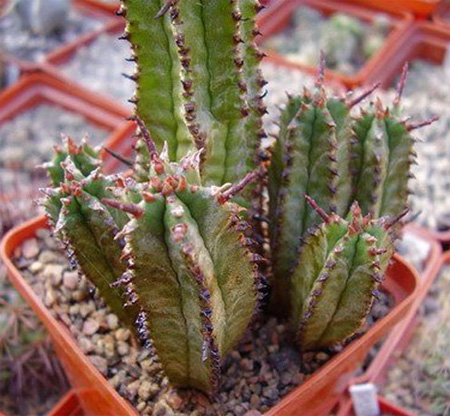
The peculiarity of these desert plants is that they have adapted not only to store water in the stem, but also to protect it from animals. The creepiest of thorny trees under common name alluaudia grow in the deserts of southern Madagascar. There are similar thorny trees in the southwestern deserts of the USA and Mexico - these are giants cereus.

When we talk about the desert, first of all we imagine sandy expanses where there is no water, no animals, no plants. But such a landscape is not ubiquitous, and nature in the desert can be very diverse. Deserts are home to several species of birds, mammals, herbivores, insects and reptiles. This means they have something to eat in the desert.
Despite the hot and dry climate, strong winds and sandstorms, and lack of precipitation, representatives of the animal world are able to survive in such conditions. Some species of flora have also adapted to these conditions.
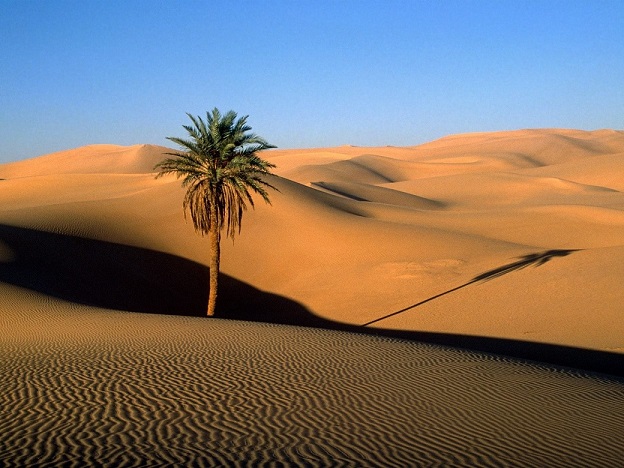
What are the living conditions for plants in deserts?
The local flora has adaptations that help it survive:
- thorns;
- powerful root system;
- fleshy leaves;
- small height.
These devices allow plants to gain a foothold in the soil. Long roots reach underground waters, and leaves retain moisture for a long time. Since shrubs and trees grow at a certain distance from each other, they can absorb moisture within their radius to the maximum. Only under such conditions does flora exist in the desert.
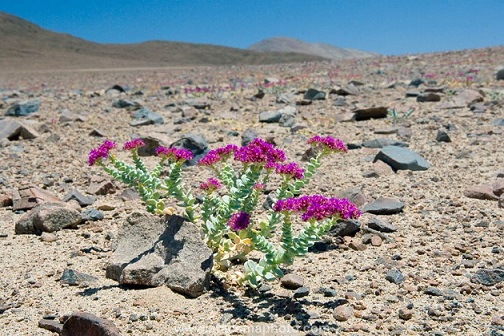
What types of flora grow in deserts?
The flora of the desert is very unusual. Various types of cacti are the most common in this natural area. They come in different sizes and shapes, but in general they have a massive body and spines. Some species live for about a hundred years. Aloe is also found here and has thorns and fleshy leaves.
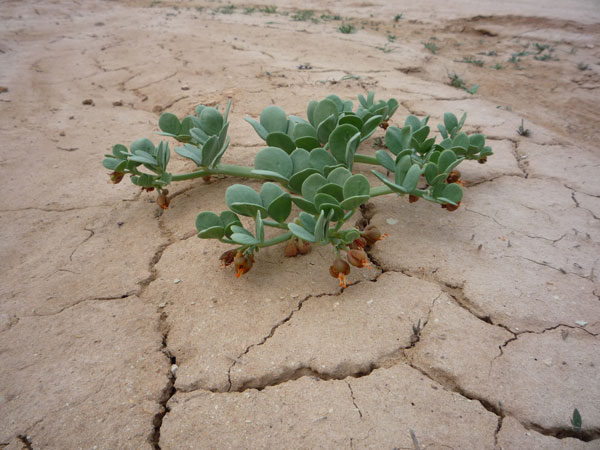
Baobab trees also grow in deserts. These are trees that have massive trunks and long roots, so they are fed from underground water sources. Quite often in deserts, spherical tumbleweed shrubs are found. The jojoba tree also grows here, from the fruits of which valuable oil is obtained.
The desert is rich in small plants that bloom when it rains. During this period, the desert is clothed in colorful flowers. Among the small plants there are camel thorns and saxaul.
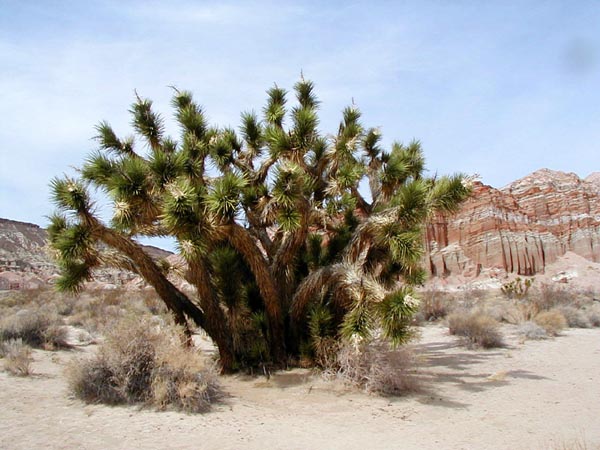
Among other plants in the deserts, lithops and elm, creosote bush and comb, cereus, and slipway grow. Wormwood, sedge, bluegrass and other herbaceous plants, trees and shrubs grow in the oases.
All desert plants have adapted to harsh climatic conditions. But, despite the thorns, thorns, and small size, the desert flora is magnificent and amazing. When rainfall occurs, plants even bloom. Anyone who has seen the blooming desert with his own eyes will never forget this magnificent miracle of nature.
Educational video about plants in the desert
How plants adapted to life in the desert
The diversity of plants in the desert is possible because they have special adaptations and differ significantly from the vegetation of forests and steppes. If these plants natural areas There are powerful stems and branches, but desert plants have very thin stems in which moisture accumulates. Leaves and branches are modified into spines and shoots. Some plants have scales instead of leaves, for example, saxaul. Despite the fact that desert plants are small in size, they have a long and powerful root system that allows them to gain a foothold in sandy soil. On average, the length of the roots reaches 5-10 meters, and in some species it is longer. This allows the roots to reach the groundwater that feeds the plants. To ensure that each shrub, tree or perennial plant receives enough moisture, they grow on a specific plant from each other.
So, the most adapted for life in the desert different types flora. Since cacti live for several decades, and some individuals grow for more than 100 years. Different shapes and the shades have ephemera, which bloom especially vividly during rain. In some places you can find unique saxaul forests. They can grow as trees or shrubs that reach an average height of 5 meters, but can be taller. Very large shrubs are found in the desert. These could be sand acacias. They have thin trunks and small leaves with small purple flowers. The creosote bush has yellow blooms. It is adapted to long-term drought and harsh climatic conditions, and repels animals by emitting an unpleasant odor. Various succulents grow in the desert, such as lithops. It is worth emphasizing that any desert in the world can surprise you with the diversity and beauty of its flora.
